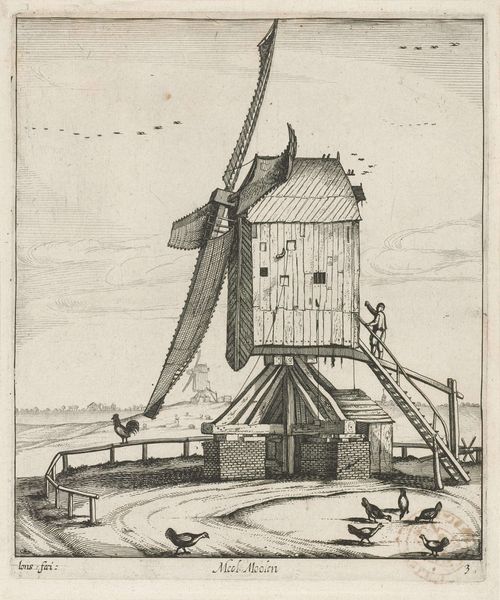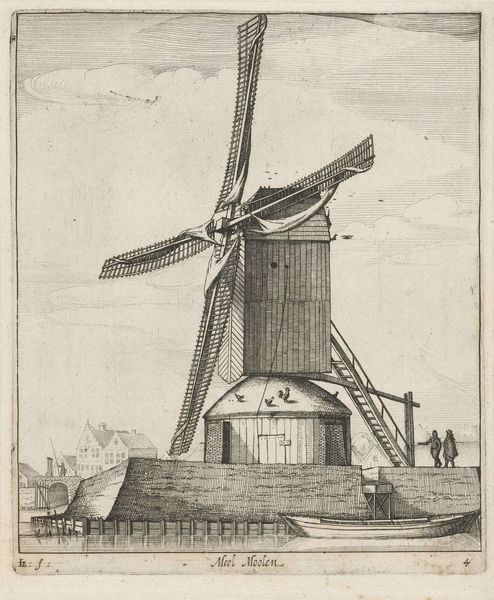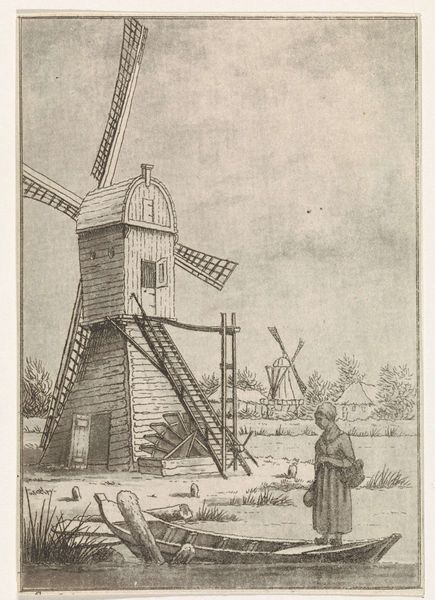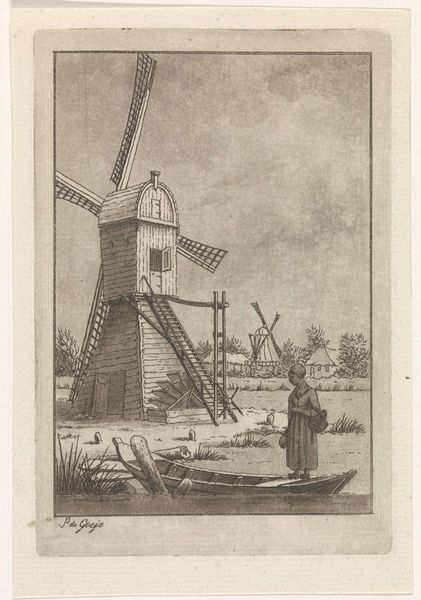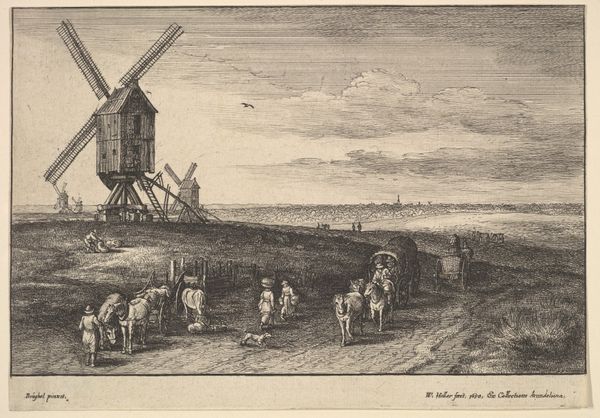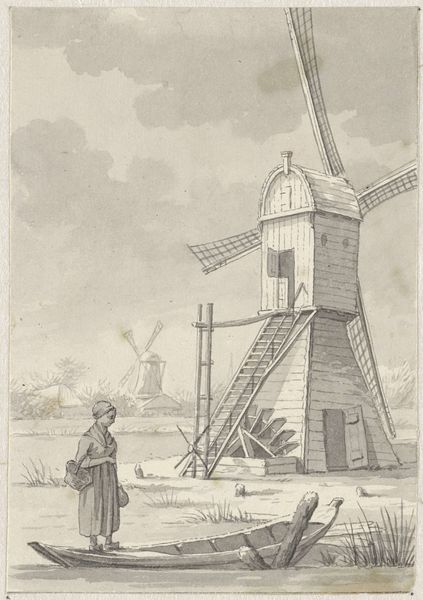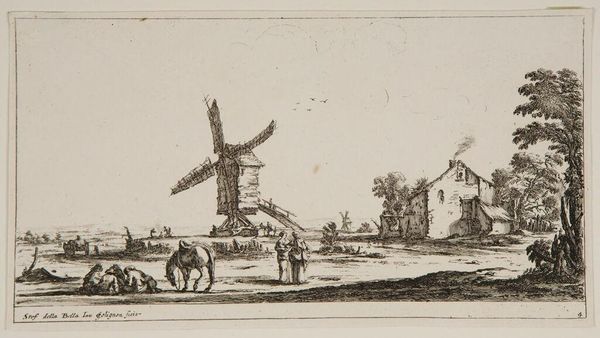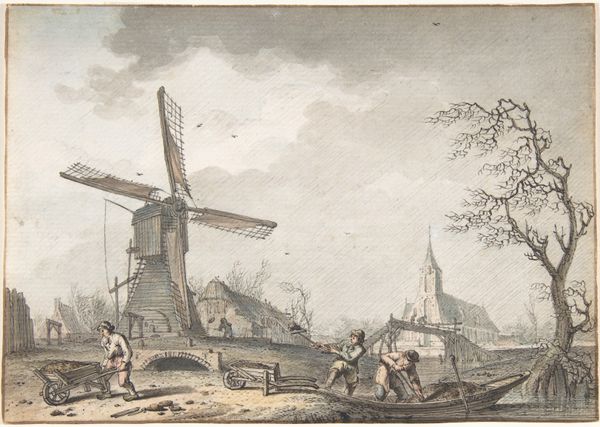
print, engraving
#
dutch-golden-age
# print
#
landscape
#
genre-painting
#
engraving
#
realism
Dimensions: height 200 mm, width 167 mm
Copyright: Rijks Museum: Open Domain
Curator: Welcome. Here we have “Gortmolen,” an engraving by Dirk Eversen Lons, created around 1631. It’s a rather unassuming image, isn’t it? Editor: It does strike me as simple. Very clean lines, everything meticulously delineated, yet there’s an overall soft, almost dreamlike quality. It feels quite idyllic despite being so sharply rendered. Curator: The detail is key, really; that sharp delineation situates the work within a very specific period of Dutch art history and reveals the realities of life at the time. Think about the importance of these windmills. This engraving portrays the practical technology of 17th century Dutch society; the mills grounded grain and literally fueled local economies. Editor: Absolutely, and speaking of fueling… structurally, notice how the windmill’s towering vertical form is juxtaposed with the low, horizontal landscape, but then unified with the overcast sky. It emphasizes a balance between man-made structure and nature. Curator: And that integration tells us about a specific cultural ideal, a harmonious coexistence. You see it, not only in the setting but also in the inclusion of the figures on the left, seemingly delivering grain. It's everyday life. There is a social and communal narrative embedded within this picturesque scene. Editor: It also calls to mind something fundamental, in a symbolic manner. The meticulous detail brings clarity and weight to its subject. You've also got that contrast between the sturdy structure of the mill versus the soft thatched roof and flowing lines of the surrounding nature… Curator: Exactly. Lons positions the Gortmolen not just as a building, but as a linchpin, central to commerce, trade, and ultimately, community. Art of this time functioned, not as purely decorative or self-expressive, but was rather deeply embedded in the cultural and social fabric. Editor: Fascinating how this print allows such careful observation. I think I’ll never look at another windmill without considering that perfect visual and structural harmony. Curator: I hope that this has made clear how art can show us not only what people saw but how they lived. It helps us envision how daily life was lived, and understood, back then.
Comments
No comments
Be the first to comment and join the conversation on the ultimate creative platform.
